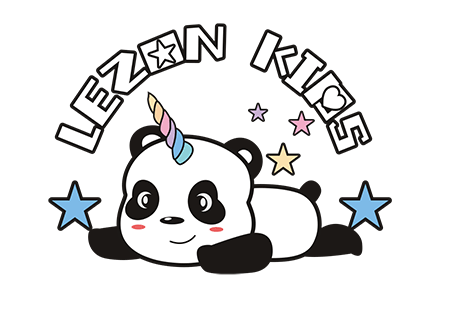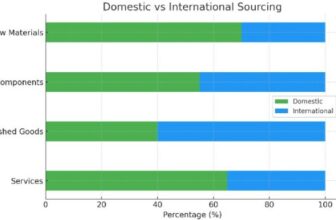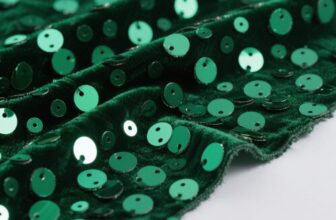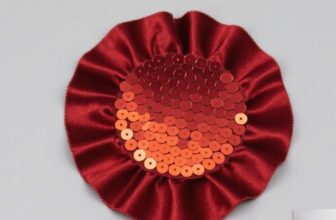2025-07-11
How $1,500 Can Help You Succeed with a Childrens Clothing Store
1. What Can $1,500 Do?
A cross-border job opportunity? A new mobile phone? Or a fancy family weekend getaway? In the eyes of traditional children’s clothing entrepreneurs, it’s not even enough to pay the deposit for a design draft. However, today, I’m going to tell you a fact that is subverting the industry: $1,500 is enough to be the starting point for your childrens clothing business to take off.
2. The “Capital Burden” of Traditional Childrens Clothing Entrepreneurship
| Startup Stage | Traditional Cost Model | Flexible Supply Chain Model Cost |
|---|---|---|
| Design and Development Fees | About $3,000 | $0 |
| First Order Production Investment | About $7,500 | $1,500 |
| Total Startup Capital | $10,500 | $1,500 |
The numbers in the table are cold, but the financial pressure on entrepreneurs is very real. In the traditional model, the two mountains of design fees and first-order production alone are enough to crush 90% of entrepreneurs with dreams of children’s clothing. That huge sum of $10,500 has killed many wonderful design ideas before they even see the light of day.
Yet, the flexible supply chain is rewriting the rules of the game: it reduces design fees to zero and lowers the first-order production cost to an incredible $1,500.
This is not a deduction; it’s a reality happening now:
Last summer, Chen Lin, a fresh college graduate, nervously tried this model with his saved New Year’s money. He chose LEZONKIDS’ flexible supply chain service:
- Zero design fees: directly use the platform’s professional designs
- Only 100 pieces for the first order: 3 styles, each with about 30-40 pieces in mixed sizes
- Fast production: only 15 days from confirmation to receipt
He launched the products on his independent website and community. Relying on precise content from the ins children’s clothing matching account to attract traffic, he achieved a balance of payments in the first month and fully recovered his investment in the third month. Now, his small store has a stable monthly turnover of about $8,000, and it all started with that brave $1,500 trial fund.
Chen Lin’s success is no accident. Behind it are the four core pillars provided by the flexible supply chain.
3. LEZONKIDS Flexible Supply Chain
3.1 Minimum Order Quantity Revolution: 100 Pieces per Style with Mixed Sizes
Say goodbye to the industry’s old rule of “minimum 1,000 pieces per order”. You can start production with 100 pieces, and it supports mixed orders of multiple sizes for a single style. This means:
- Capital occupation is reduced by more than 85%
- The cost of trial and error drops sharply
- You can test 3-5 styles at the same time to spread risks
3.2 Double Free Support: Design Fee + Sample Fee = 0
- Free design library open: you can directly use the designs, or the 25-person professional design team can provide free modification services
- Free physical sampling: after confirming the product, you can get a visual sample in 3 days to check the quality before mass production
3.3 Scrap Recycling System: Turning Surplus into Profit
The essence of the flexible supply chain is to maximize utilization. After optimizing the layout with LEZONKIDS’ intelligent cutting bed, the remaining scraps are made into:
- Hair bands, bibs
- Creative patches, pendants
- Eco-friendly bags
These gifts cost almost nothing, but they increase the customer unit price by 15% and the repurchase rate by 30%.
4. Smart Factory Guarantee: Double Insurance for Efficiency and Quality
Supporting the system is LEZONKIDS’ 6,000㎡ intelligent production base:
- Workshop matrix division of labor: small-sized, printing, precision, and packaging workshops are independent to avoid cross-contamination
- Intelligent cutting bed: the automatic layout system makes the fabric utilization rate reach 92%, far exceeding the manual level of 85%
Why is the flexible supply chain the optimal model for current childrens clothing entrepreneurship?
- Risk hedging mechanism: small-batch trial sales verify the market. Hot styles can be reordered immediately, and unsalable styles can be stopped in time.
- Capital efficiency revolution: the capital of $10,500 in the traditional model can support 7 production batches in the flexible chain.
- Agile response to trends: from design to launch in as fast as 15 days to seize the outbreak period of short video marketing.
- Environmental compliance advantages: layered production reduces inventory waste, and scrap utilization conforms to ESG trends.
A Shenzhen mother who uses this model summarized: “I used to lose sleep over overstocked goods. Now I launch 2 new styles every week. If they sell well, I reorder next week. The goods are always flowing.”
5. Double Quality Inspection System: “Double Insurance” for Safety and Quality
The safety and quality of childrens clothing are the bottom line and the lifeline. LEZONKIDS factory implements a strict quality inspection process that far exceeds industry standards:
5.1 Three Manual Inspections:
- In-process inspection: after key sewing processes, full-time QC conducts random or full inspections of semi-finished products to find and correct problems in time.
- Final inspection: each finished product must go through at least 3 different stages of full manual inspection after offline:
- Check for thread ends, stains, and other appearance defects.
- Check the firmness of all buttons, zippers, Velcro, and decorations (sequins, beads) to ensure no risk of falling off.
- Check the sewing strength, stitch density, accuracy, and size specifications.
5.2 Intelligent Quality Inspection Assistance
AI visual inspection equipment is introduced to automatically scan and detect the color fastness of printing/embroidery (simulated by hardness test), the accuracy of the position of washing labels/main labels, and the size tolerance of specific parts. It marks suspected problem points for manual review. This system can effectively detect problems that are easily ignored by the human eye due to fatigue, keeping the pass rate above 99%.
6. LEZONKIDS Design Support
LEZONKIDS, with its 25-person elite design team as the core engine, is improving its amazing creative power, accurate trend prediction, and in-depth integration of intelligent flexible manufacturing. It has become an irreplaceable “hit maker” in the hearts of more and more brand customers. They not only continuously output new designs with efficient design capabilities but also lock in key elements that will set off the market months in advance. This helps customers achieve explosive growth in key sales seasons (such as the back-to-school season) and turn “festivals” into real sales performance.
Such a creative flood does not rely on a large number of people. Instead, it comes from a precise, professional, and efficiently cooperating 25-person core design team. The secret behind this special number is that Suki, a senior trend analyst/consultant in the team, deeply participates in core trend research and direction control in a flexible way to ensure the team is always at the forefront of trends. The core 8 designers are carefully selected industry veterans with an average of more than 5 years of children’s clothing design experience. They deeply understand children’s psychology and parents’ purchasing needs.
Such a high creative density brings incomparable advantages to customers:
- Continuous freshness: a steady stream of new products is the key to keeping the brand alive in the market and attracting repeat purchases. It effectively avoids outdated product lines and consumers’ aesthetic fatigue.
- Precise fight against homogeneity: unique design perspectives and rapid iteration capabilities make customers’ products stand out from the identical ones on the shelves.
- Risk diversification: a large optional Solution Library allows customers to flexibly choose and combine according to their own positioning and market feedback, reducing the risk of betting on a single style.
7. Action Guide for Entrepreneurs
- First order strategy: choose 2-3 basic versatile items (such as pure cotton onesies, casual pants)
- Size configuration: 80-120 sizes each account for 30%, and 90-110 sizes are the key (accounting for 40% of a single style)
- Visual breakthrough: use the scrap accessories as gifts to make “matching sets” to attract attention
- Test feedback: set up a feedback system immediately after the first order to collect size and comfort data to guide reorders
This is not a downgrade of cheap manufacturing but an upgrade of precise supply.
While the traditional model is still struggling with tens of thousands of overstocked inventory, the flexible supply chain uses the key of $1,500 to open the growth channel of “small steps and quick runs” for entrepreneurs. The competition in the childrens clothing industry is shifting from capital games of “betting on hits” to wisdom contests of “competing for efficiency”.
We know that every childrens clothing dream deserves to be treated gently. LEZONKIDS’ flexible supply chain not only serves orders but also provides entrepreneurs with the most important trial and error opportunity. Here, $1,500 is not a desperate bet but a recyclable creative seed.









